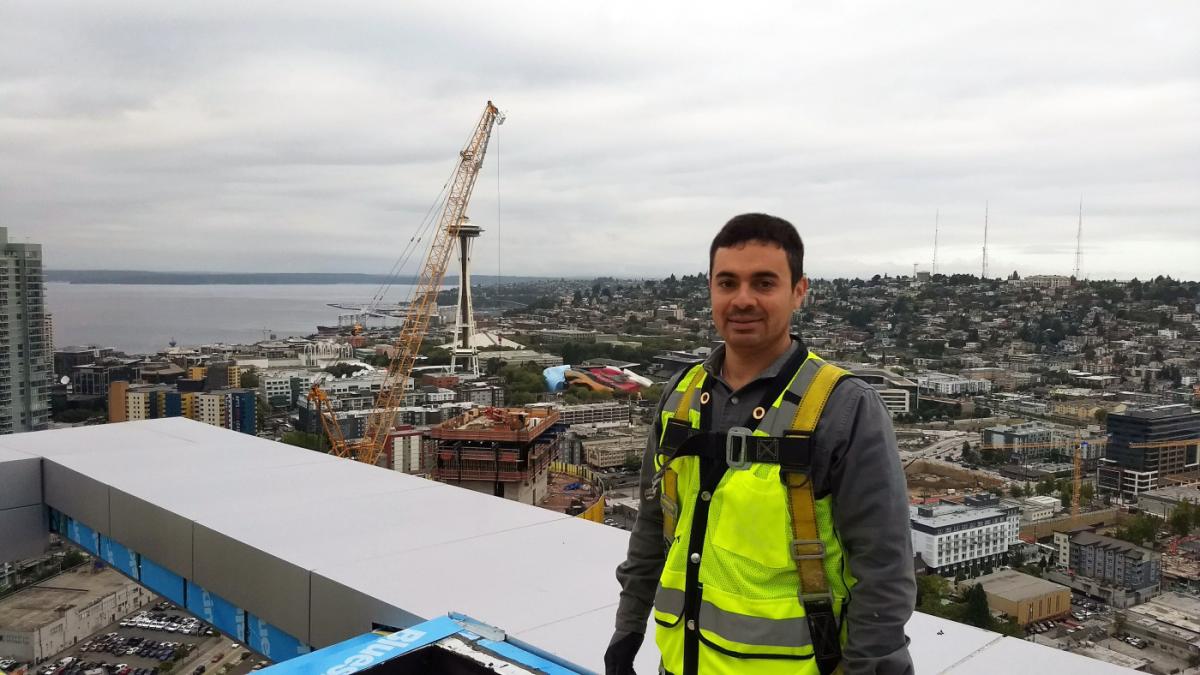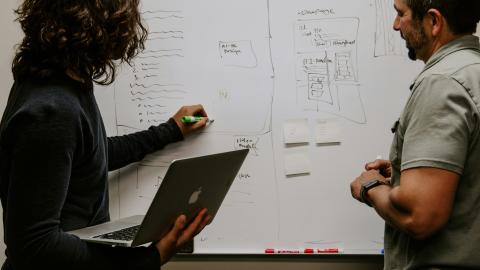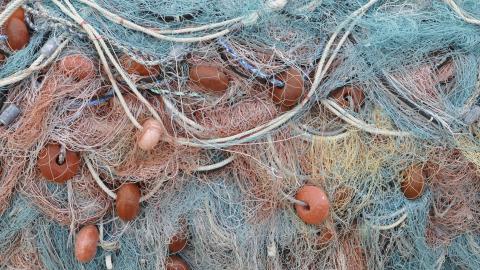
CMOSH is a former track within the Master of Science in Construction Management degree program at the University of Washington, offered in partnership with the Northwest Center for Occupational Health and Safety Education and Research Center. The track aimed to produce future construction management leaders who will have the knowledge and skills to integrate project management and occupational health and safety for true project success. CMOSH students received a well-rounded and interdisciplinary learning experience covering subjects from construction management, occupational health and safety, and industry practices. While the track is no longer available, companies across the Northwest are still benefiting from the Occupational Health and Safety expertise provided by CMOSH graduates.
CMOSH graduate Jeremy Berke sat down with us to share his experience in this unique multidisciplinary program:
Why did you choose CMOSH instead of a traditional Construction Management track?
I had already been working towards the Construction Management graduate degree at the University of Washington for one quarter when I learned of CMOSH directly through the program director, Dr. Ken-Yu Lin’s, Research Methods in Construction course. The course load for CMOSH is significantly greater than that of the 'traditional' construction management track, but there are many draws to joining the program. There is the opportunity to learn research methods in environmental and occupational health, along with the fellowship. The level of advising and support surpasses that which is typically available through the CM program alone, as are the opportunities to conduct research. Additional access to resources, such as travel funds to attend industry conferences, are also available.
 Why is occupational safety and health important to you?
Why is occupational safety and health important to you?
Before joining the CMOSH program I was a project developer in renewable energy. The field is rife with altruistic professionals, set on changing the way that energy is produced, but there were occasions where I witnessed lapses in workplace safety. This struck me as odd - a business with ambitions to make a lasting impact on environmental health should also ensure worker health and safety in all of its activities. This is not to say that the industry is negligent as a whole, but there were several instances where a little precaution and planning would have avoided some near-misses or worse. Fortunately, most educational resources in the field do stress the safety when working with electricity, from heights and other hazards inherent to wind, solar and energy storage.
What was your thesis, and what did you find in your research?
My research was about implementing “solar ready” building standards within the scope of new building construction. Several jurisdictions across the nation are in the process of enacting building codes and ordinances that specify electrical and structural components for inclusion in a new construction. These will facilitate the future installation of solar electric systems, with the promise of reduced system installation cost and increased worker safety. The core of the research was a policy analysis, supplemented with a survey questionnaire and short, structured interviews.
 My thesis was that the most effective “solar ready” policies would prescribe elements that are independent of the ultimate solar electric system size and type. Such a design guideline will mitigate obsolescence of the pre-installed components. In other words, good “solar ready” design is at best “future-proof” and never counter-productive.
My thesis was that the most effective “solar ready” policies would prescribe elements that are independent of the ultimate solar electric system size and type. Such a design guideline will mitigate obsolescence of the pre-installed components. In other words, good “solar ready” design is at best “future-proof” and never counter-productive.
In my research I found that the most effective “solar ready” practices to date are those that effectively reduce future labor hours. Such reductions in future labor hours result in real cost savings as well as the elimination of hazard exposure for solar installers. The research also revealed that many building codes focus on the welfare of building occupants; yet the varied domains of building codes might benefit from considering worker safety and how the various design requirements interact with one another. These precautions might not be limited to the safety of installers but to those of other workers (e.g. firefighters, building operations and maintenance) that find themselves on rooftops as part of their work activities.
Tell us a bit about your internship and what you learned.
I interned with Snyder Roofing of Washington, one of the Northwest’s largest commercial roofing and waterproofing contractors. I shadowed the Environmental Health and Safety Director and participated in all aspects of the safety program. Snyder is renown for having an exceptionally low L&I experience rating here in Washington, despite the fact that roofing is understood to be among the most incident-prone trades found in construction.
Aside from taking an active role in fall safety training and the logistical challenges that come from coordinating amongst 18 remote work crews on any given day; I also witnessed, to some extent, the labor negations that took place when the Local 54 Roofers & Waterproofers picketed during contract negotiations with the roofing employers. This only emphasized the importance of a robust working relationship between contractor and labor in achieving safety goals. Communication, feedback, discipline and training are essential tools in getting everyone home safely at the end of the day. As an added bonus, I visited a number of active construction sites in Seattle and across the region.
What were the most valuable things you learned in the CMOSH program, and what were your most valuable experiences during the program?
Looking back on the experience, CMOSH was demanding and it helped me learn a lot about myself. I took advantage of many resources at the UW; attending lectures, workshops, and the quarterly modules about research ethics given by the Northwest Center Education and Resource Center (ERC).
I would characterize the interdisciplinary nature of parts of the curriculum as among the very best career development experiences. One course in particular, on Occupational Disease, was especially challenging and rewarding, given the clinical focus and broad scope of the subject matter. Despite coming from a background in urban planning, renewables, and construction management; I was able to contribute during class discussions. This speaks to the respectful, inclusive environment of the classroom. With no background as a health practitioner, I walked away with a newfound respect for those in the field, and astonished myself at being able to effectively communicate in the language of epidemiology and occupational medicine.
What do you hope to do career-wise in the future?
I would like to work at the intersection of safety, sustainability and the built environment, exploring ways of applying technology to solve problems. There are a few PhD programs that focus on the intersection of policy and energy, I am considering pursuing one of these after gaining some more work experience.
As a trainee in a small and relatively new, program, how did you spend your downtime at the University of Washington?
During my graduate studies I was a member and Publicity Chair for the Washington Yacht Club (WYC). The WYC is the UW’s very own sailing club, sustained by community volunteers and run by students. For $25 you receive a quarterly membership and they teach you how to sail on Union Bay. The waterfront activities center is a fun place to hang out in general, and they have everything from sailboards for windsurfing to a 44’ offshore cruiser that the club uses for seasonal overnighters and training in large vessel cruising. Taking a Laser out on a late spring or early fall afternoon was a great way to unwind during my studies! Also, attending the Northwest Center ERC events with fellow trainees, staff, and faculty made the CMOSH experience less lonely.




